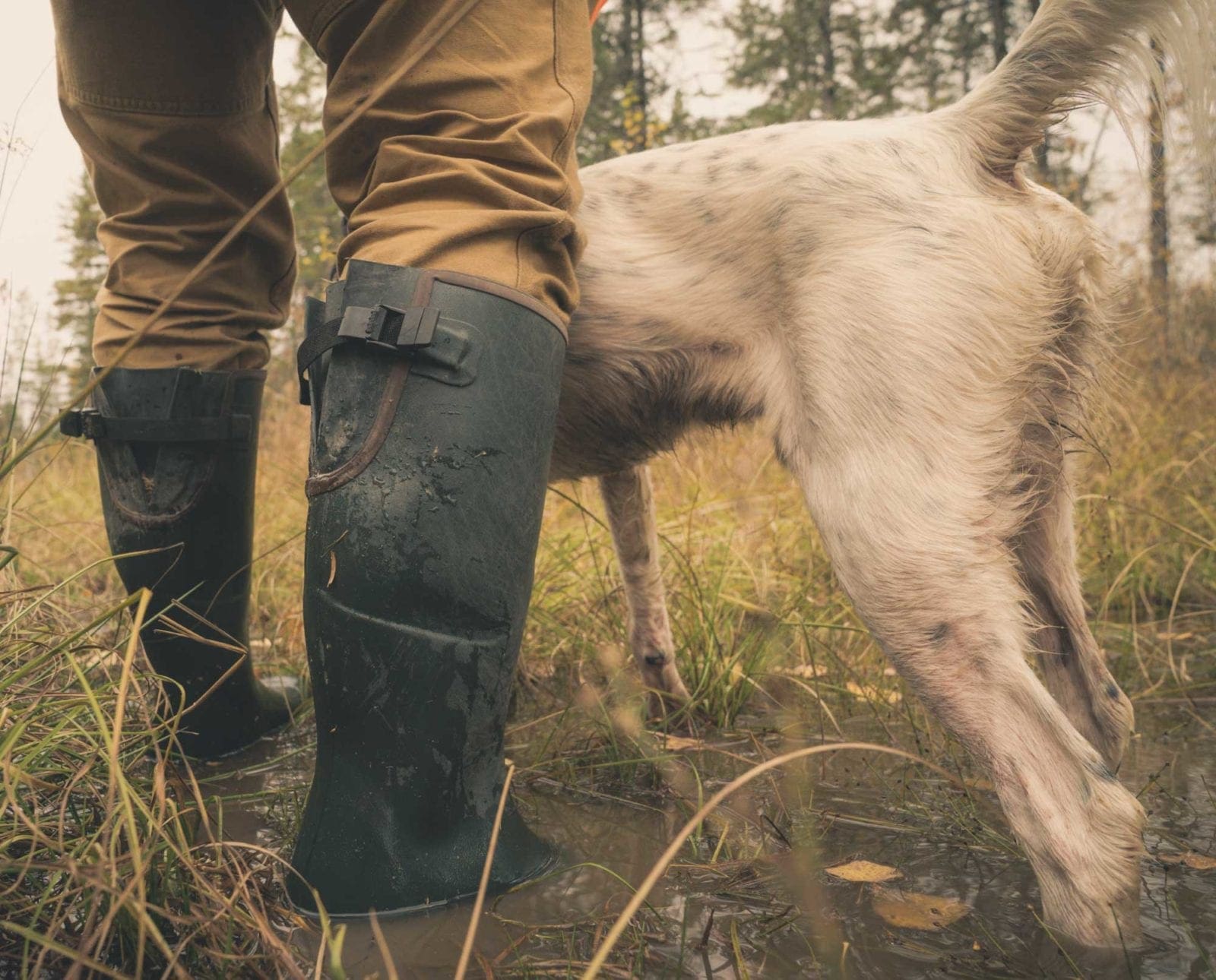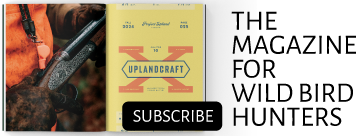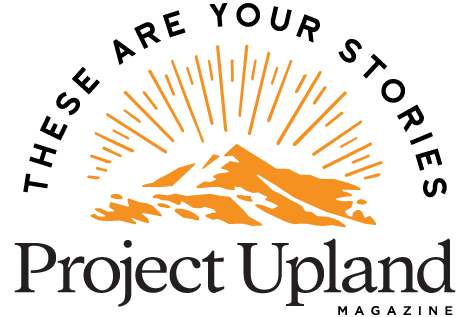
Nick Larson is the host and creator of the Project…
Built with the upland hunter in mind, Gumleaf Boots come in both men’s and women’s sizing.
The proper upland hunting footwear has always been—and likely always will be—a much discussed topic among the legions of hunters that take to the field each season. While the topic still interests me, the great boot debate does intrigue me as much as it used to. Over the past couple of seasons, I’ve discovered a solution that suits me and my needs extremely well. Enter: the knee-high rubber boot. In this case, Gumleaf boots.
Project Upland readers are also entitled to free shipping on all orders from Gumleaf USA. Please enter promo code: PU2018
As a northern grouse and woodcock hunter in the Midwest, I hunt forest cover both high and low (much of it being the latter). Swamp edges and stream beds are the norm, especially when I am targeting woodcock in their most likely feeding covers. As a result, one of the major concerns I share with many other upland hunters is how waterproof my boots are.
For years, I kicked around with some of the best in comfy leather boots. You know, the ones with “waterproof and breathable membranes.” And yet for as comfortable and well made as many of these boots are, they more often than not still inevitably leak. The leaking usually starts somewhere near a seam or from total saturation of the leather. But before I get too far off track, I need to mention that the purpose of this article is not to discredit the use of leather and canvas hunting boots. I own some myself and have enjoyed hunting in them given the proper conditions. That said, I find it harder and harder each time I take to the woods to convince myself that I should wear anything but my rubber boots.
Truth be told, I initially purchased a pair of neoprene lined rubber boots from a well-known USA manufacturer. Initially, I used them in the spring while running the dog in wet covers after the snow melt however I realized their versatility very quickly. There is great convenience in being able to walk straight through standing water deep in wild bird cover. When my dog is on point, I like to get there as quickly and efficiently as possible instead of having to tip-toe around puddles or mud.
Only one problem emerged with my first pair. Durability. Admittedly, I wore the boots a lot. But in less than a year, small holes had opened up on each boot at specific crease points in the rubber. I found out later that plastic, mixed in with the rubber to cut costs, was the real culprit. The plastic eventually cracks and splits. While the quality disappointed me, the functionality infatuated me enough to purchase another pair despite the low durability.
That is, until I chanced upon a company called Gumleaf USA.
I began researching the brand and was surprised I had never heard of them before. Reading a review recommending the boots by another upland hunter intrigued me enough to contact the company. A day later, I was engaging in an email conversation with the CEO of Gumleaf USA, Jack Butler. He answered all of my questions and directed me towards the proper boot for my needs. The Royal Zips interested me, but we settled on the Vikings for their larger and adjustable calf openings. Shortly thereafter, the boots were on their way and I was excited to test them out.
After more than two months of tromping through the northern forests of Minnesota and Wisconsin, it’s safe to say that I’m a huge fan of the boots from Gumleaf USA. Dry and comfortable feet are now the standard by which I measure my upland hunting footwear. Since 1937, Gumleaf boots have been handmade and expertly crafted in Europe. The company delivers a quality boot constructed of a lightweight, but durable, outsole. This is combined with an eighty-five percent natural rubber upper that resists cracks and leaks. The boots are lined with a cozy and comfortable neoprene liner.
When switching to a rubber boot, I was most concerned with sweat and overheating on warm days. I have, however, found that the neoprene lines ventilates extremely well. And while my feet can get hot on warm days, it rarely bothers me. In fact, I’d wager that the effect is no worse than it is with a pair of laced waterproof leather boots. Your feet are going to be warm on sultry days. But when the temps drop to normal, your Gumleaf boots will feel like a dream come true. Thanks to the air-cushioned heel and forefoot, there is always comfort. Always dry, always cozy, always warm—your feet will thank you for it.
When you slip on a pair of Gumleaf boots, you will experience a new sense of freedom. Imagine being able to intentionally and directly make your way through any cover. Beaver swamps, alder patches, flooded trails and ditches will be no match for your footwear. You could be moving from point to point behind the nose of a good bird dog, following the dog and the birds wherever they might take you.
Besides the versatility and functionality of Gumleaf boots, there is the added bonus of tick prevention. You can’t be too careful in an era of increasing incidents of tick-borne diseases. I’m not aware of any scientific studies or research to support this claim. But in the circles I run in, there is the strong belief that pants tucked into a pair of tall rubber boots is an effective method of tick prevention. When it comes to keeping a tick from hitching a ride as you stroll by, it’s better safe than sorry!
Lastly, I want to talk about the price and why it comes in above average. I had already invested more in two pairs of the cheaper, better known boots than in a single pair of Gumleafs. If my Gumleafs can outlast them—as I’ve been assured—I’ll be in great shape. The Gumleaf boots are higher quality, more comfortable, and constructed with superior materials. All of this ultimately warrants their premium price.
If you’re searching for a new pair of boots (available in both men’s and women’s sizing) and plan to spend any amount of time in wet or muddy conditions, your search is over. Whether you’re upland hunting, dog training, or getting some work done around camp, look no further than a pair of rubber wellington style boots from Gumleaf boots.
Nick Larson is the host and creator of the Project Upland Podcast. He and his family, which includes a pair of English setters, reside in Duluth, Minnesota. Naturally, his favorite pursuit is upland bird hunting. From the northern forests of the upper great lakes to the prairies of the west, he chases adventure across the uplands wherever his bird dogs and the people he meets inspire him to go.




Timely review! I did my first upland hunt this week and discovered the challenges of good footwear. I got out of my car wearing name brand Gortex-lined hikers, that I’ve had for awhile. The first hour or so was on flat ground: woods and brush. Then we hiked down a little ravine and the dogs found a bird. The shooting lane required me to step into a little stream. First steps, no problem. Had to maneuver around a bit and, next thing I know, the water is up over the laces and my feet are starting to get wet.
How are the Gumleafs for hiking and negotiating obstacles like logs and rock walls? The common criticism about wellingtons is that they are not comfy for long walks and lack support for climbing over obstacles.
Keep up the good work here and in the ‘pod. The information allowed me to have a successful first day afield.
Thanks for the feedback on the podcast Bob! Glad you’re enjoying it and the fact that you were able to implement some new information from our guests… even better!
Throughout my experience so far, in the tangled mess that is grouse and woodcock cover, the Gumleafs have performed exceptionally well. The support that I get out of them seems to be just right and as I commented below, there’s something about the high boot that provides an additional layer of support that a lower boot does not necessarily. Fit is going to be important here for sure. As far as comfort goes, I think the neoprene liner makes all the difference in the world, these aren’t your typically rubber boots. They are much higher quality in every way.
If you haven’t already listened to the first 10-15 mins of this podcast you’ll hear me talk about them a bit more:
http://www.blogtalkradio.com/projectupland/2017/11/03/episode-6-tyler-webster
What about ankle support?
Great question Mike! I find the support of these boots to be excellent. While I didn’t touch on it specifically in this review, I did talk about it during the intro to a recent podcast.
There’s something unique about the extended height of these Gumleaf boots, and/or others like them. I rarely if ever find my ankles in compromising positions, and I feel very supported. In fact on a particular hot and steamy afternoon this fall I opted to wear a pair of traditional leather upland boots and I immediately noticed an unusual lack of support and instability of the ankles. I switched back to the Gumleafs the following morning and have never looked back.
If you listen to the first 10-15 mins of this podcast you’ll hear me talk about them a bit more:
http://www.blogtalkradio.com/projectupland/2017/11/03/episode-6-tyler-webster
These boots are cold once temps drop into the 40’s. No use for these in Minnesota after October 1st. I wish I’d researched them better before spending $300